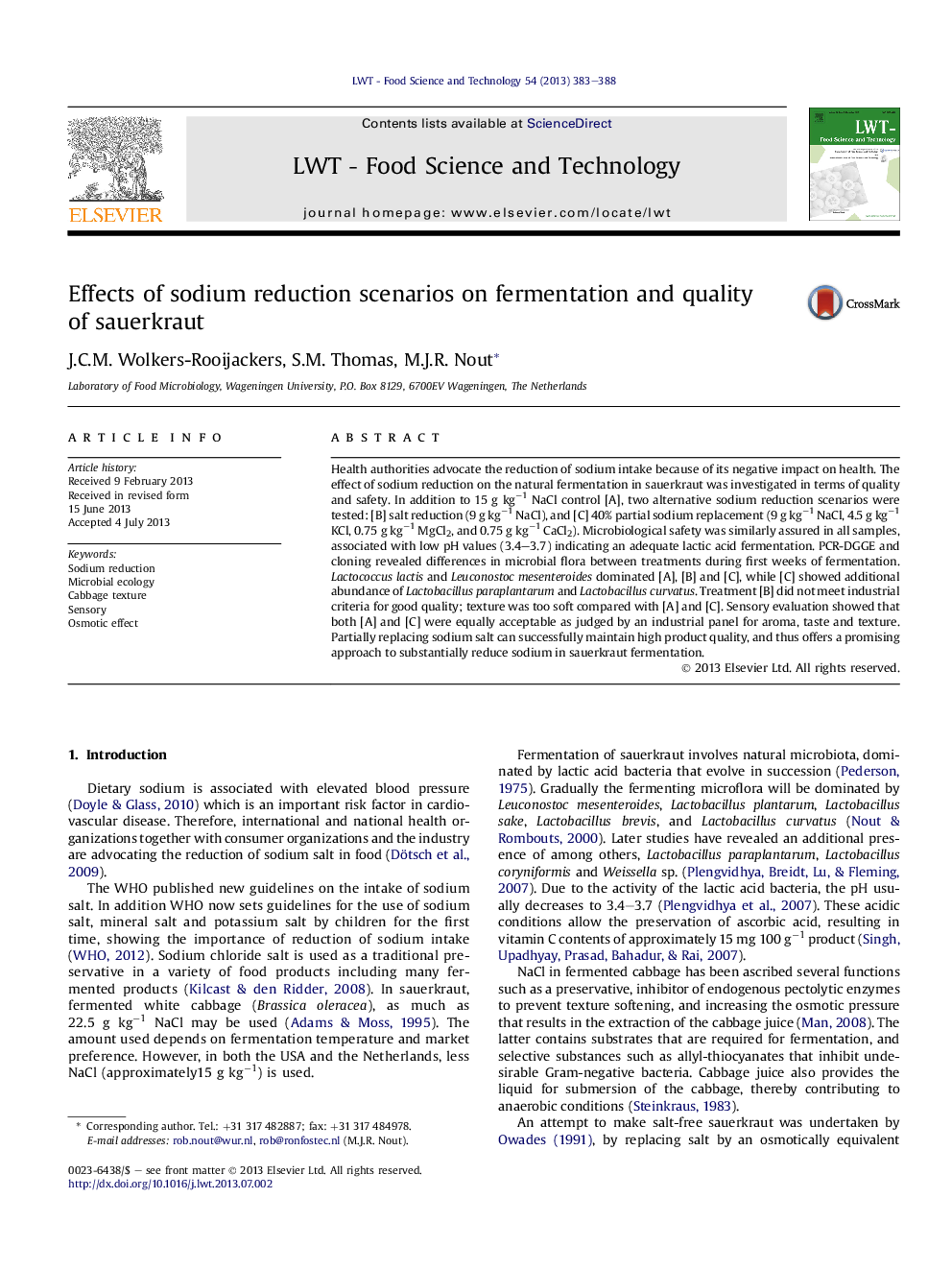| Article ID | Journal | Published Year | Pages | File Type |
|---|---|---|---|---|
| 6404575 | LWT - Food Science and Technology | 2013 | 6 Pages |
â¢Sodium reduction of 40% in sauerkraut is feasible.â¢Crispness of sauerkraut is determined by osmotic effect.â¢Mineral salt mix is more promising than only reducing NaCl.
Health authorities advocate the reduction of sodium intake because of its negative impact on health. The effect of sodium reduction on the natural fermentation in sauerkraut was investigated in terms of quality and safety. In addition to 15 g kgâ1 NaCl control [A], two alternative sodium reduction scenarios were tested: [B] salt reduction (9 g kgâ1 NaCl), and [C] 40% partial sodium replacement (9 g kgâ1 NaCl, 4.5 g kgâ1 KCl, 0.75 g kgâ1 MgCl2, and 0.75 g kgâ1 CaCl2). Microbiological safety was similarly assured in all samples, associated with low pH values (3.4-3.7) indicating an adequate lactic acid fermentation. PCR-DGGE and cloning revealed differences in microbial flora between treatments during first weeks of fermentation. Lactococcus lactis and Leuconostoc mesenteroides dominated [A], [B] and [C], while [C] showed additional abundance of Lactobacillus paraplantarum and Lactobacillus curvatus. Treatment [B] did not meet industrial criteria for good quality; texture was too soft compared with [A] and [C]. Sensory evaluation showed that both [A] and [C] were equally acceptable as judged by an industrial panel for aroma, taste and texture. Partially replacing sodium salt can successfully maintain high product quality, and thus offers a promising approach to substantially reduce sodium in sauerkraut fermentation.
